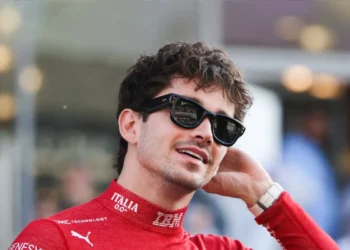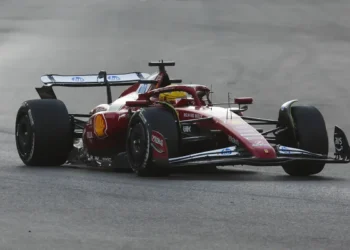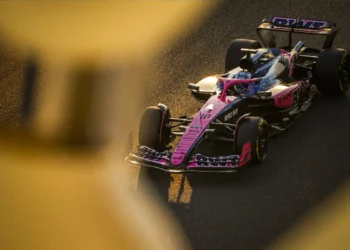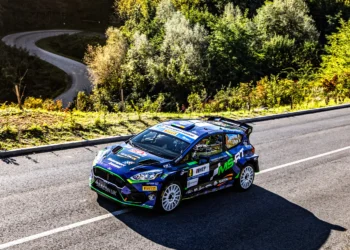The Ferrari team’s principal, Fred Vasseur, has welcomed the International Automobile Federation’s (FIA) new technical directive on wing deflection, stating that its timing is “good for us.” This comes as the FIA prepares to implement more rigorous testing for rear wing deflection from the onset of the season, with additional tests to be introduced from the Spanish Grand Prix in Barcelona, the season’s ninth round.
The FIA’s revised technical directive, TD018, was shared with teams in January, outlining the upcoming changes. The most recent F1 Commission meeting confirmed and approved the timing of these new tests, which will be effective for front wings from the Barcelona Grand Prix onwards.
The issue of wing aeroelasticity had been a hot topic in the previous season. Teams had been found looking into using their wings to maximize downforce when cornering while minimizing drag in the straight line. Following attempts by the FIA to clarify the issue last year, the stringent tests are set to make sure the wings do not flex beyond the newly reduced permissible limit for the 2025 season. This move comes after some teams expressed concerns over their rivals’ designs.
For Ferrari and Vasseur, this new directive comes at an opportune time. The team had introduced a new front wing design in the closing stages of the 2024 season. With the revised directive, they now have the necessary time to plan upgrades and comply with the new regulations.
Speaking to the media, including PlanetF1.com, Vasseur stated, “For me, it’s not an issue. I think it’s good to have clarity. The most important for me is to know that we have to change something on the front wing by Barcelona, for example.”
He further highlighted that although the directive comes a week after Monaco, it’s beneficial for the team’s development and planning. Vasseur added, “You can discuss about the timing, but at the end of the day, it’s good for us — it’s good for the development and the planning to know when we have to bring something.”
Vasseur also noted the potential disaster had the directive been introduced midway through the season, causing teams to scramble for compliance. He concluded, “The worst case scenario would have [been] to start the season like we are today and in two or three races, to come with a TD to change something, because it’s much more difficult to plan. And in this case, it would have been a mess.”










